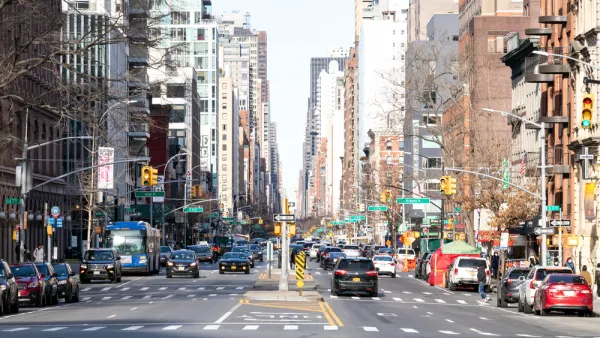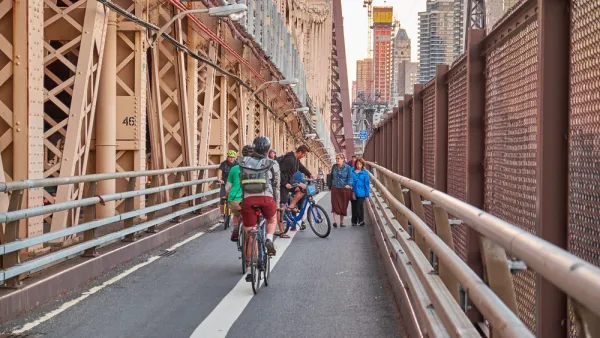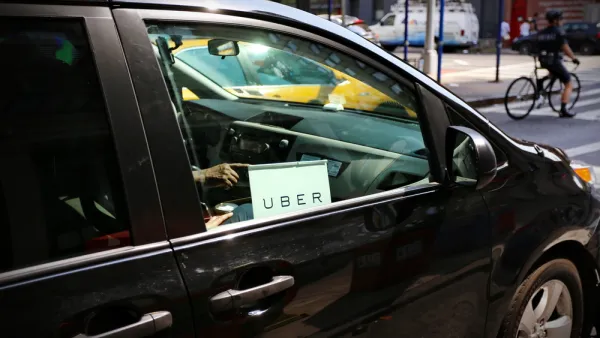New data from New York's Transportation Department shows that although miles of Manhattan street space have been turned over to bikes and pedestrians since 2008, average traffic speeds have actually increased, despite a consistent volume of vehicles.
Something funny has happened south of 60th Street in Manhattan, where new bike lanes and pedestrian plazas have popped up in recent years. New data shows that Mayor Bloomberg's "war on cars" has actually been a boon to traffic flow, benefiting the city's many modes of transportation.
"Citing GPS data from the city’s yellow cabs, the Bloomberg administration said that average traffic speeds in Manhattan’s primary central business district, south of 60th Street, had increased nearly 7 percent since 2008," reports Matt Flegenheimer.
“We’re not, despite our reputation, trying to take from one and give to the other,” Bruce Schaller, the department’s deputy commissioner for traffic and planning, said. “It isn’t a zero-sum game.”
Not all are convinced of the benevolent impact of expanding bike and pedestrian infrastructure, however. "Christopher McBride, a transportation specialist with AAA New York, noted that while traffic volumes had been fairly consistent in recent years, they had decreased significantly compared with 10 to 15 years ago, suggesting that some commuters had simply given up on Midtown driving in the Bloomberg years," notes Flegenheimer.
“It is more of a hassle now than ever to drive into the central business district,” he said. “Some of these changes that have occurred, they’re more intimidating for drivers. And a lot of parking has been eliminated.”
FULL STORY: In Bloomberg’s City of Bike Lanes, Data Show, Cabs Gain a Little Speed

National Parks Layoffs Will Cause Communities to Lose Billions
Thousands of essential park workers were laid off this week, just before the busy spring break season.

Retro-silient?: America’s First “Eco-burb,” The Woodlands Turns 50
A master-planned community north of Houston offers lessons on green infrastructure and resilient design, but falls short of its founder’s lofty affordability and walkability goals.

Delivering for America Plan Will Downgrade Mail Service in at Least 49.5 Percent of Zip Codes
Republican and Democrat lawmakers criticize the plan for its disproportionate negative impact on rural communities.

Test News Post 1
This is a summary

Test News Headline 46
Test for the image on the front page.

Balancing Bombs and Butterflies: How the National Guard Protects a Rare Species
The National Guard at Fort Indiantown Gap uses GIS technology and land management strategies to balance military training with conservation efforts, ensuring the survival of the rare eastern regal fritillary butterfly.
Urban Design for Planners 1: Software Tools
This six-course series explores essential urban design concepts using open source software and equips planners with the tools they need to participate fully in the urban design process.
Planning for Universal Design
Learn the tools for implementing Universal Design in planning regulations.
EMC Planning Group, Inc.
Planetizen
Planetizen
Mpact (formerly Rail~Volution)
Great Falls Development Authority, Inc.
HUDs Office of Policy Development and Research
NYU Wagner Graduate School of Public Service





























